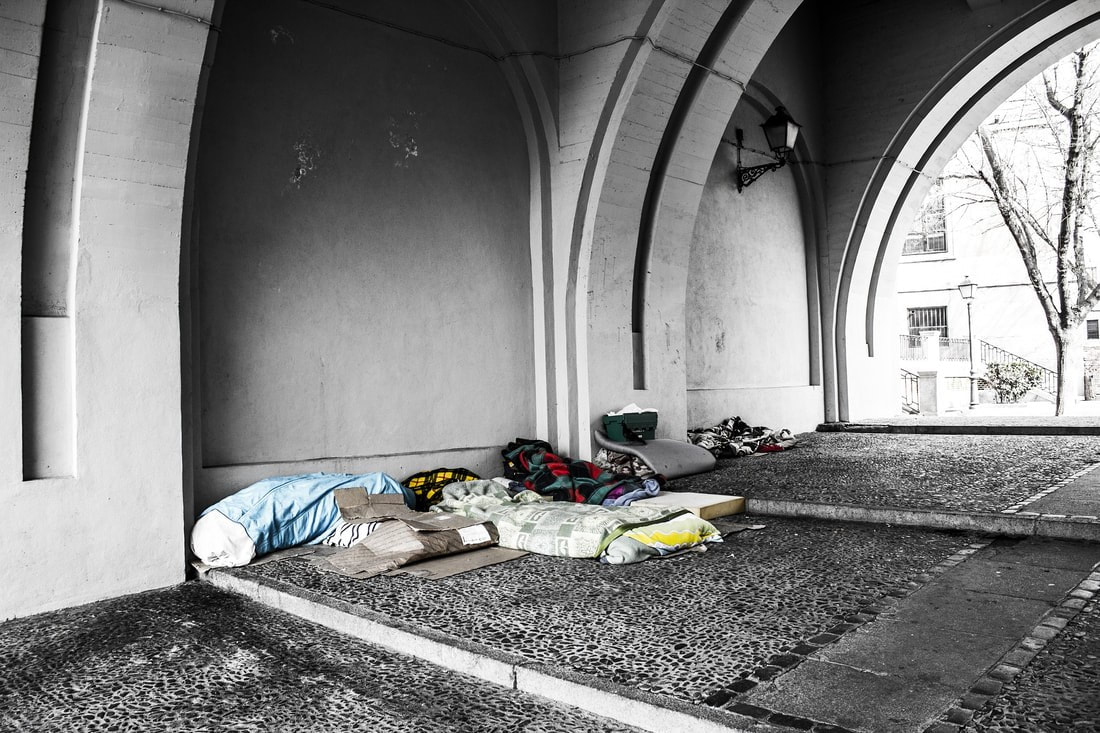|
I'm ashamed to say that most of what I thought I knew about the homeless issue was wrong. We have just launched our first podcast and chose this issue as one of the more pressing and depressing issues of our time. We wanted to explore the question that, irrespective of your politics, how could some of the wealthiest communities on the planet not solve this problem? I'm not going to replay the podcast and what we learned here (simply go to the ‘Podcast’ page and your can listen to it there). Suffice it to say most of the homeless are not 'bums' or mentally ill. In fact, about 65% of our homeless population are neigbors and compatriots who have fallen on hard times. That's hardly surprising when about 70% of Americans dont have $400 saved for an emergency. The good news is that the situation is improving, and there are very succesful programs out there like Haaven in Los Angeles (see link below) who are delivering shelter & support for less than $10,000 per bed while the public sector solutions cost over $500,000 a bed! The bad news is that despite the valiant and heart warming efforts of many, the system is still not fit for purpose and unless we adopt innovative ideas like Haaven, never will be! Please do listen to the podcast. There's tears and laughter, 'you can't be serious moments', harsh words, uplifting stories and a happy ending. It will leave you thinking differently about homelessness. Here are the links to the people we interviewed in the show, including the volunteers and charities that you could support by doing something as simple as donating some care packs of things like socks, tooth brushes & toothpaste; or offering to help them at feeding stations. https://www.pasocares.org/ https://www.haaven.org/ https://pasoroblesdailynews.com/ Here are some facts and figures, as well as a summary of what we learned:
6 Comments
Ed Bogusch
1/18/2020 02:39:23 pm
Hello Clive, you may be happy to know that I finally decided to listen to your entire podcast, not once, but twice.
Reply
Ed Bogusch
1/18/2020 04:12:21 pm
I guess there's a word limit, so here's the rest....
Reply
Ed Bogusch
1/18/2020 04:29:00 pm
I forgot to include this as part of my first point…Mark asked you why it doesn’t seem like the situation is improving, and you opined that it’s because “bad news sells.” Logic check: Then why wasn’t the bad news selling even more several years ago when the homeless situation was supposedly worse than it is now?
Clive Pinder
1/19/2020 02:03:35 pm
Ed, thanks for taking the time to listen to the podcast. For purpose of completeness, this exchange continues one you began on the Nextdoor platform when I asked that you make comments, most of which were contradicting or disagreeing with the thesis of the podcast, after listening to the complete podcast. As we live in close proximity, I also offered to meet you in person, an offer you declined.
Reply
Ed Bogusch
1/19/2020 03:38:46 pm
To say that homelessness is down because the number of homeless people as a percentage of the total population is down is a ridiculous argument. The BEST you MIGHT be able to say is that while the population is trending upward, homelessness is trending upward, but at a slower rate. You know, it is possible to observe and feel two sensations at the same time: (1) I see more traffic congestion on city roads and highways, and (2) I see more homeless people on sidewalks and parking lots. No one cares whether one is getting worse or better relative to the other. They care about a negative trend and how it affects them.
Reply
Leave a Reply. |
In Search of SanityTalk Show, Podcast & Blogs.
|
|
© COPYRIGHT 2019–2020. ALL RIGHTS RESERVED.


 RSS Feed
RSS Feed

